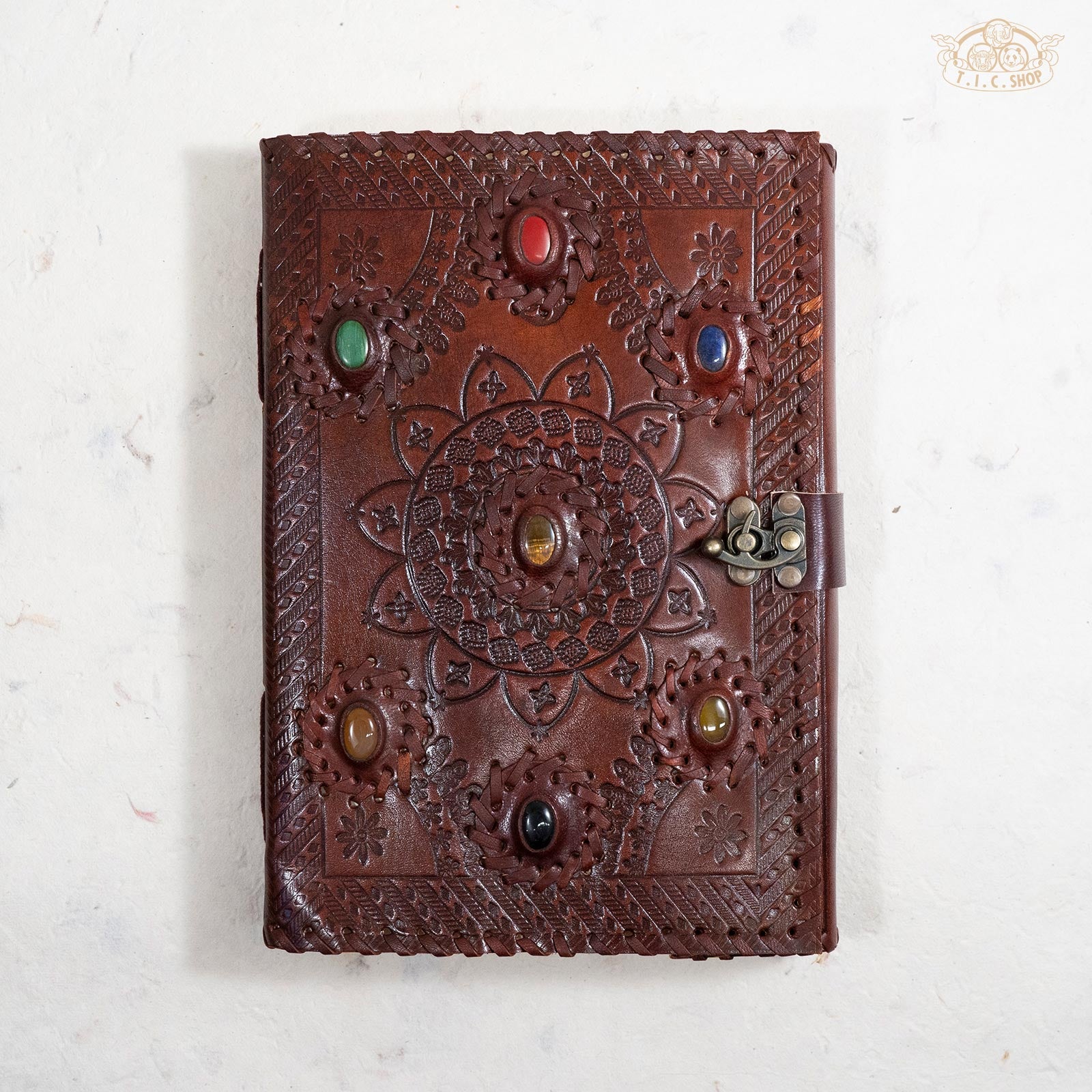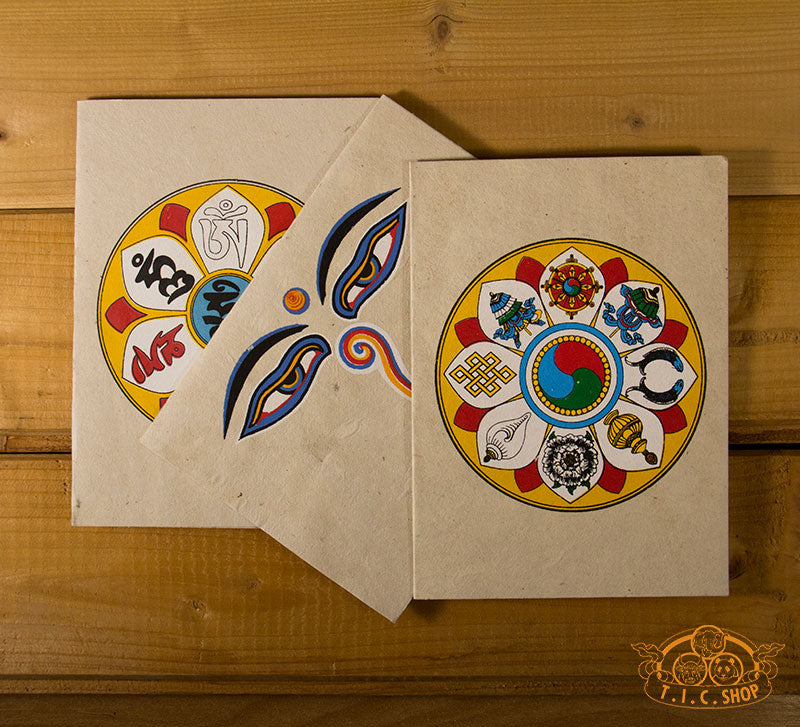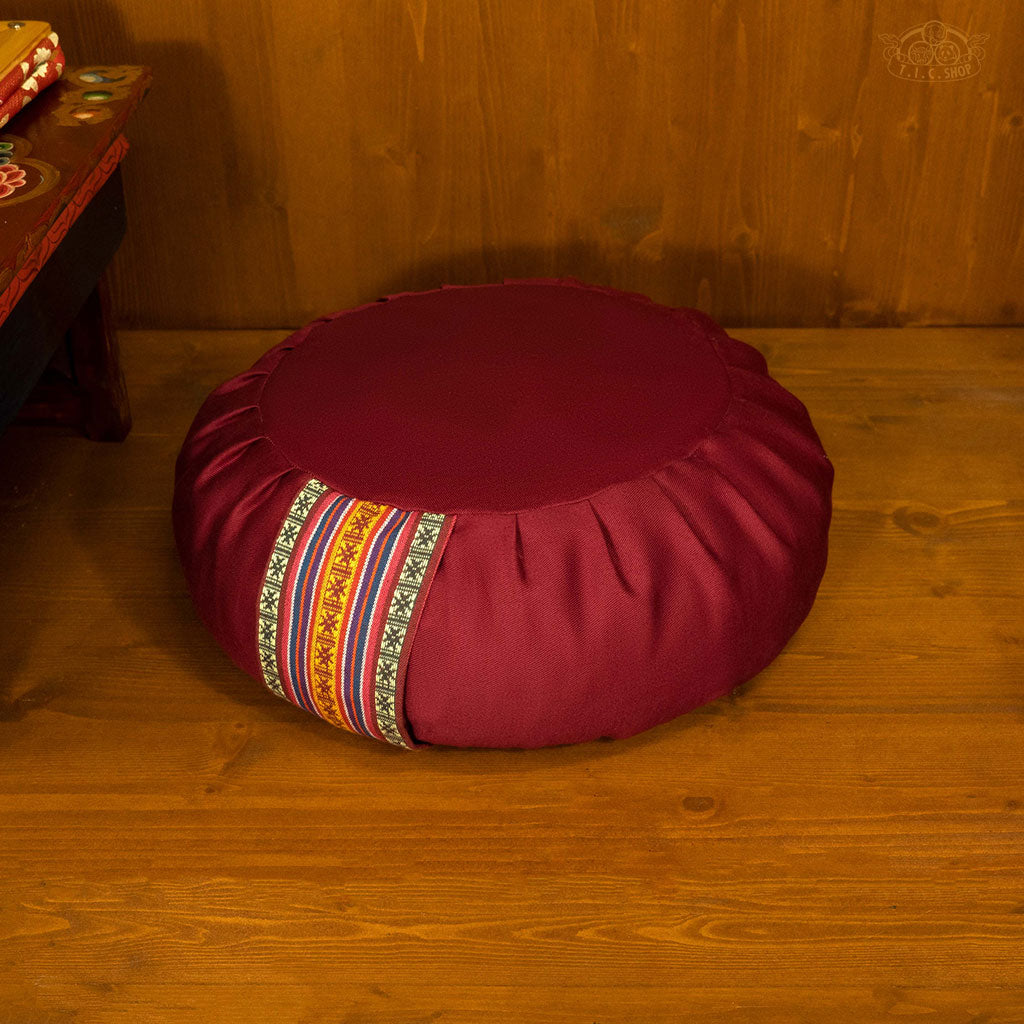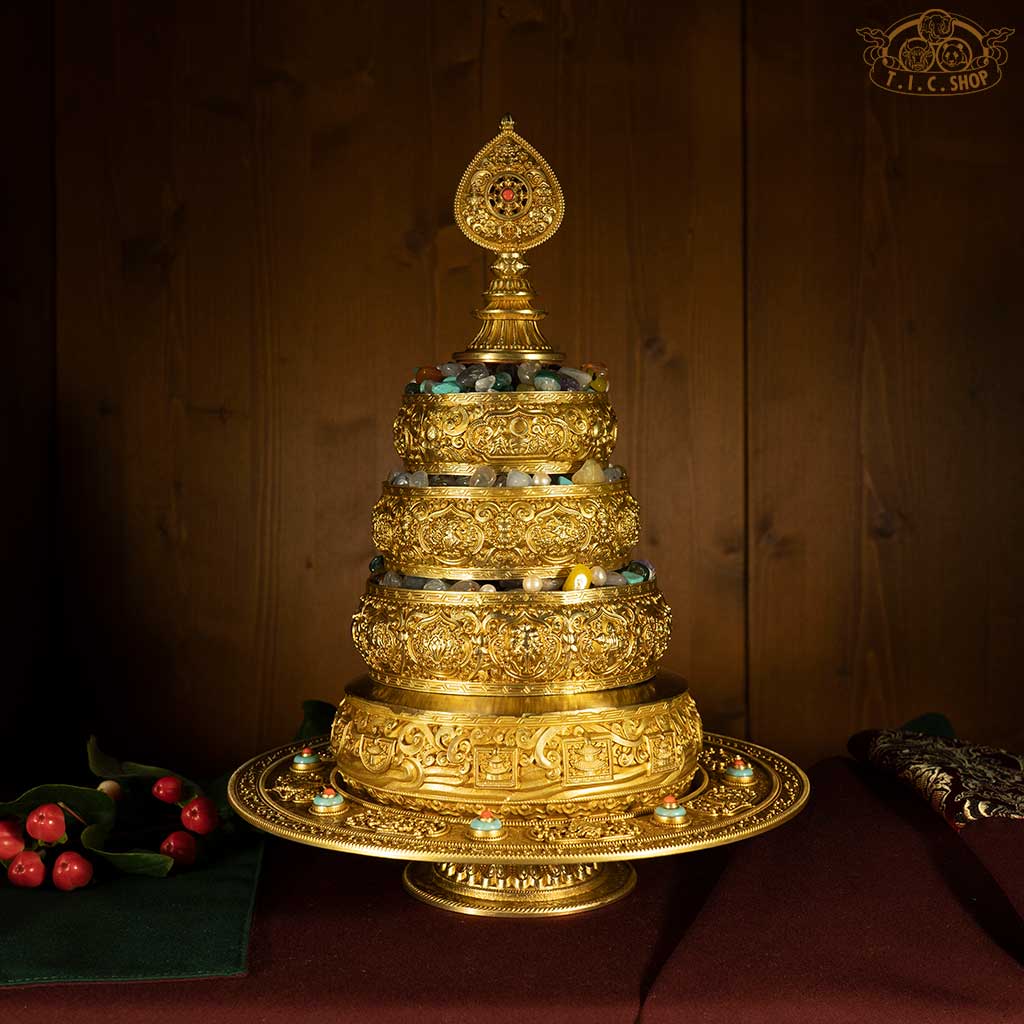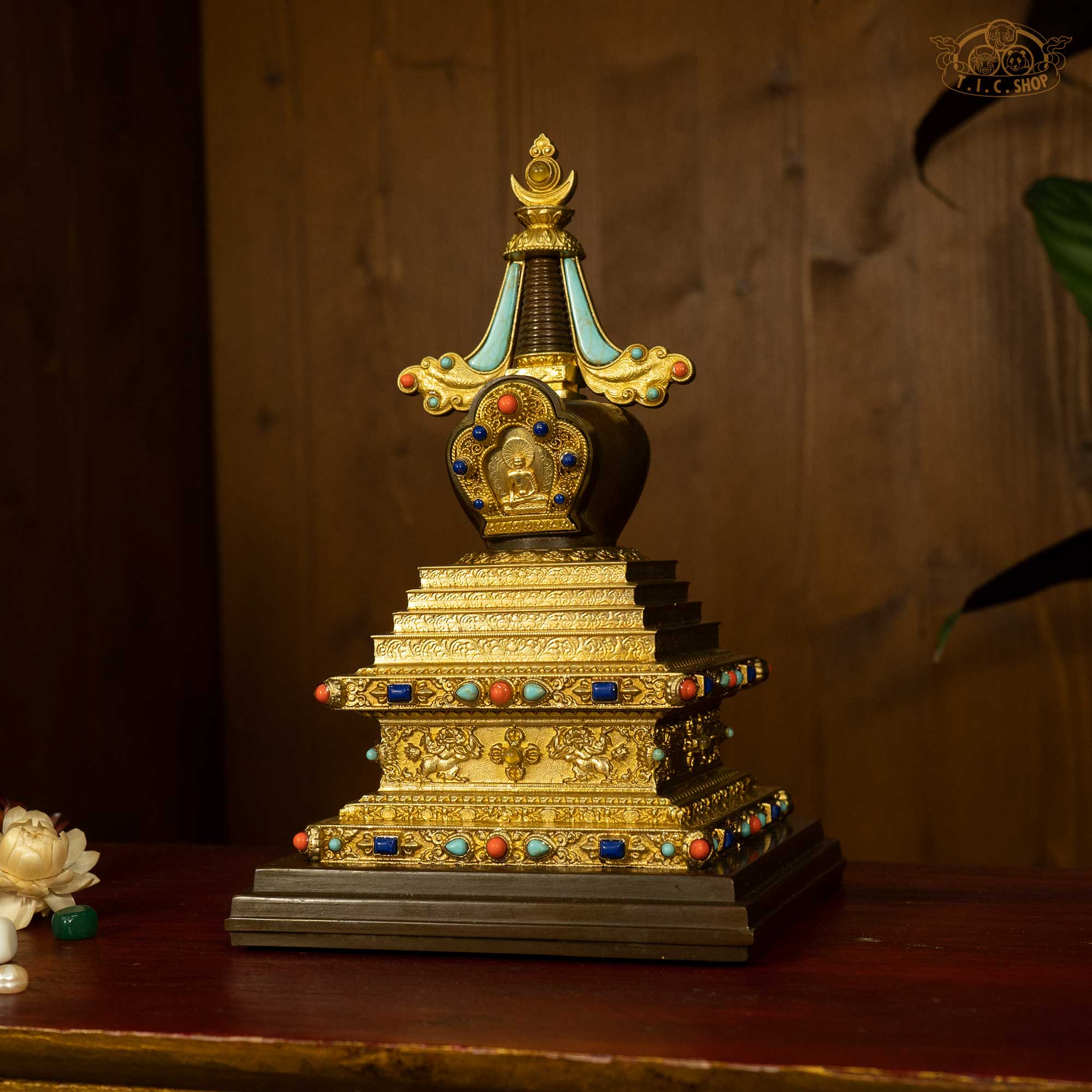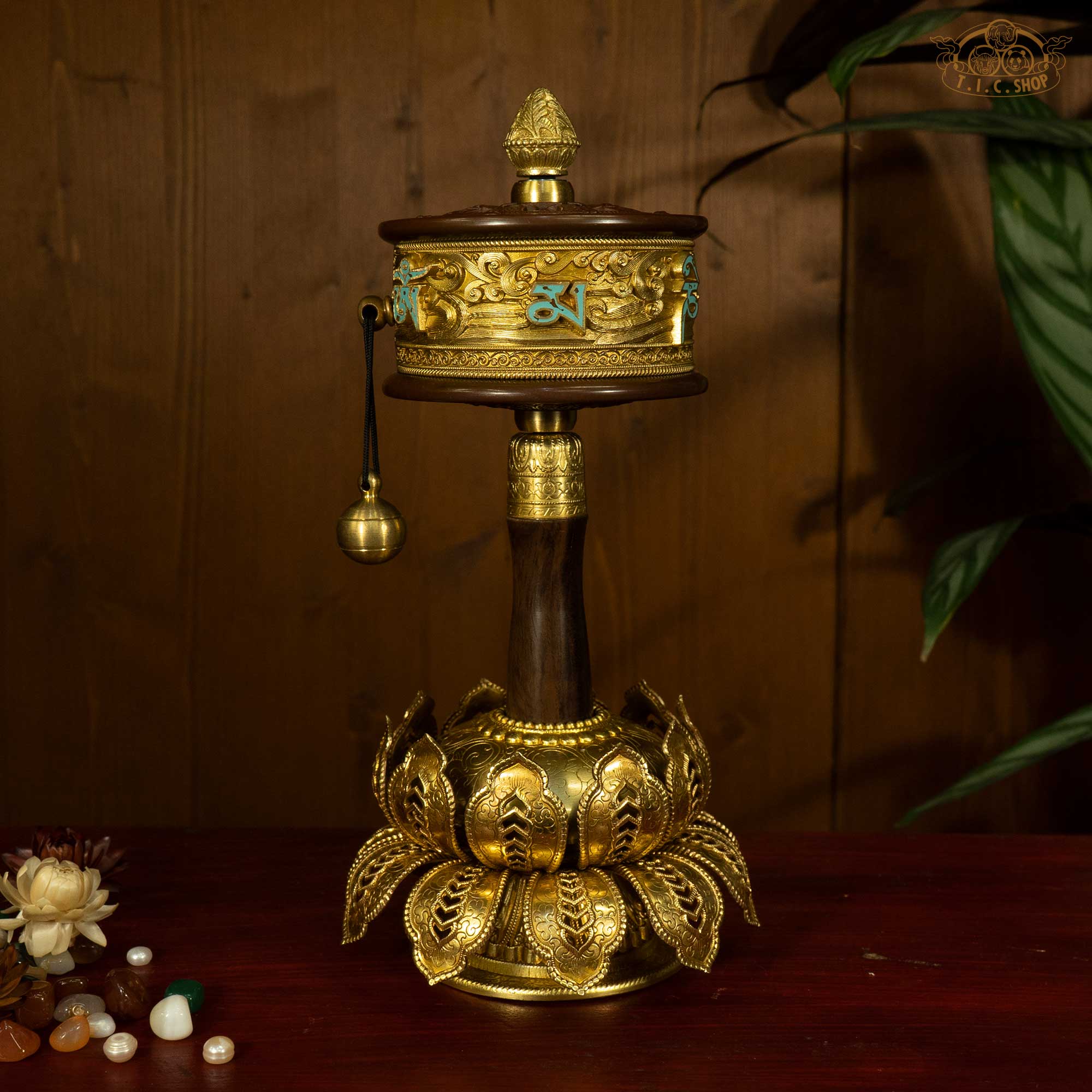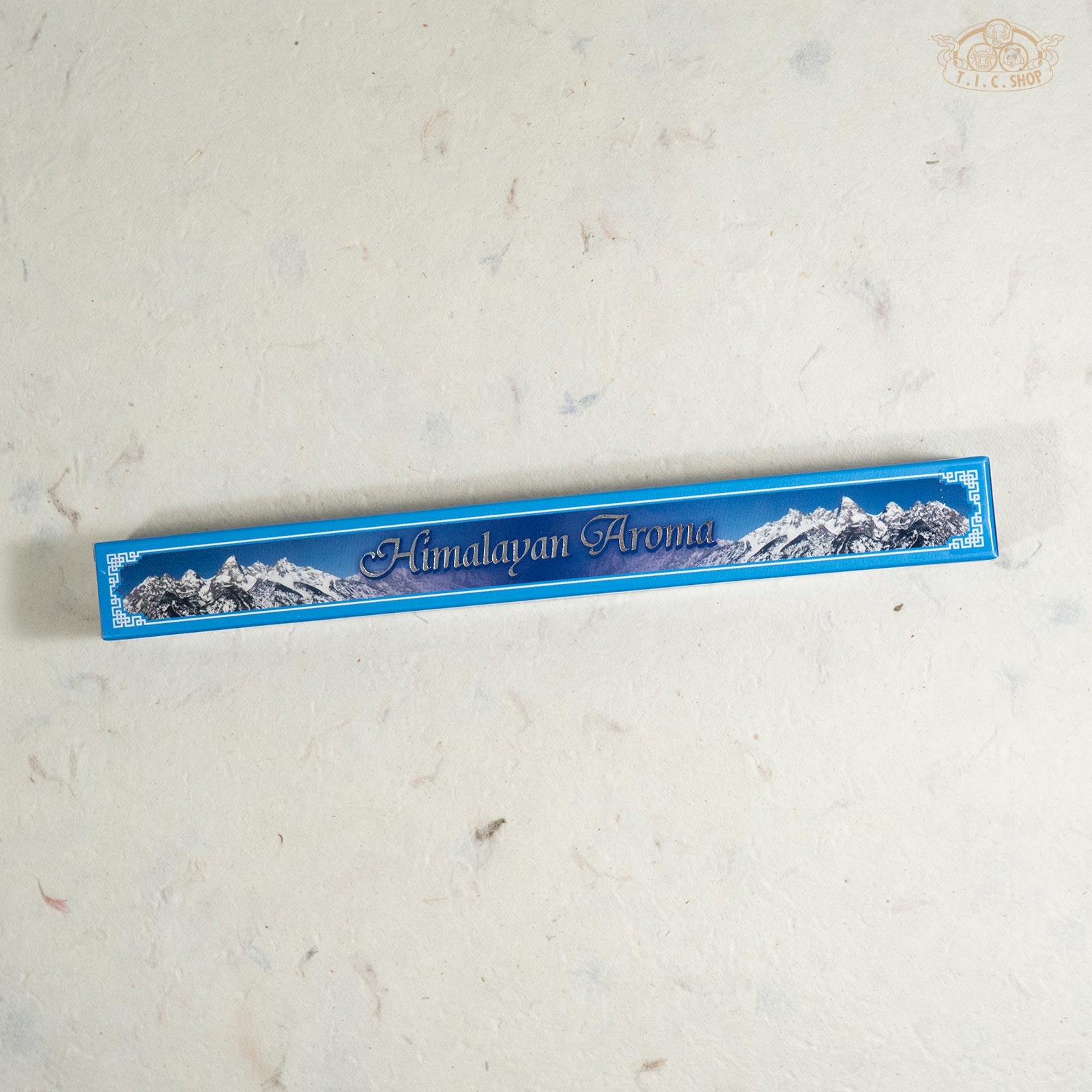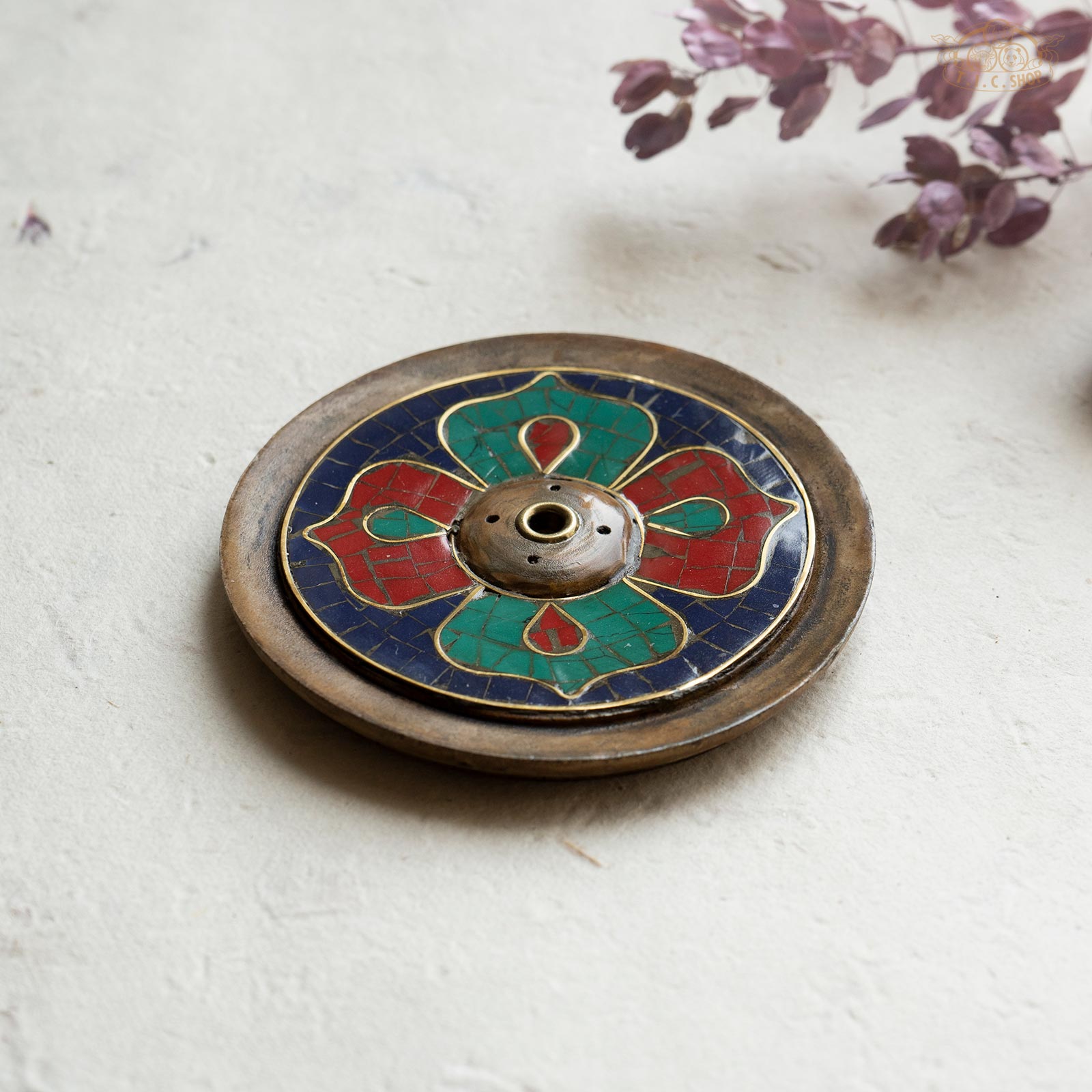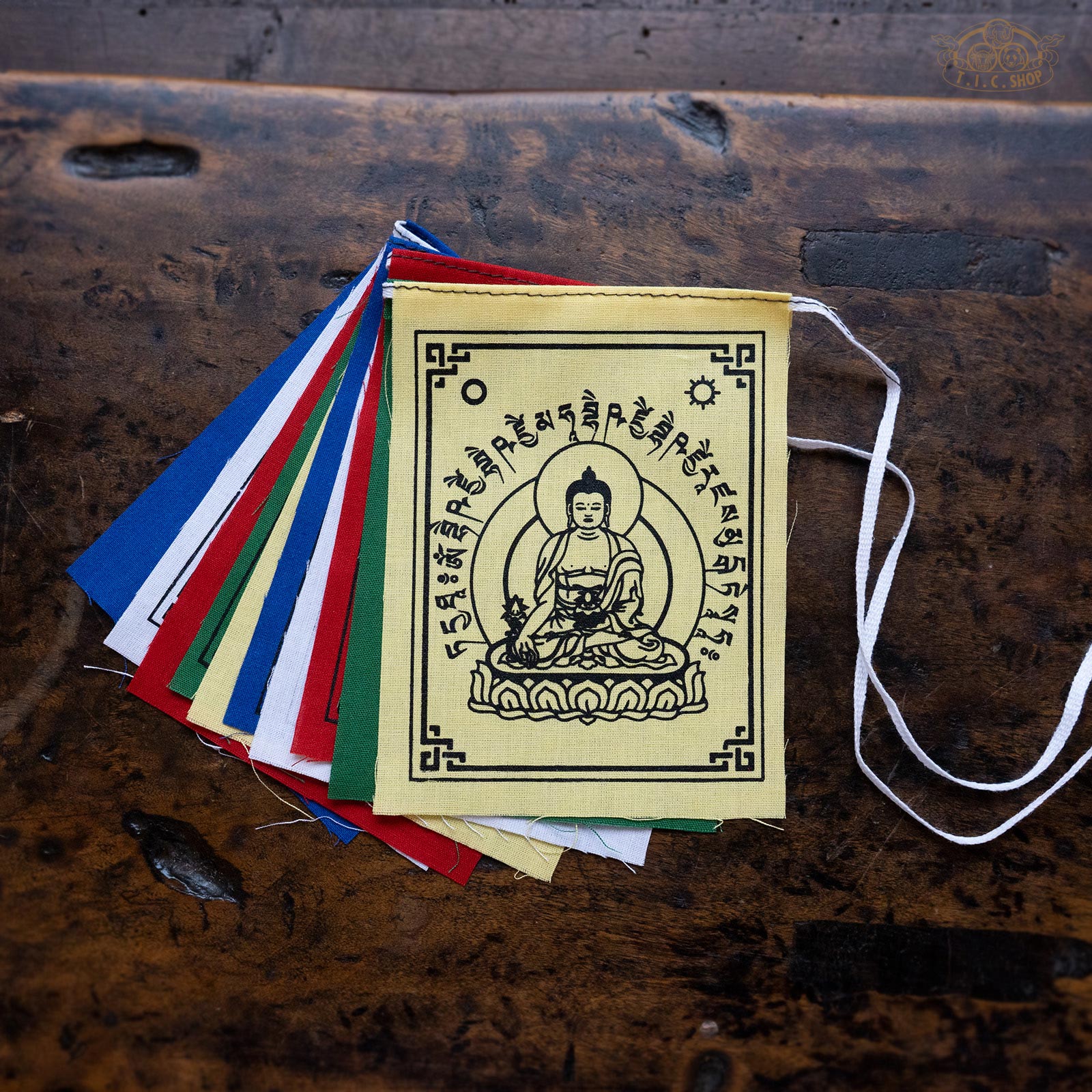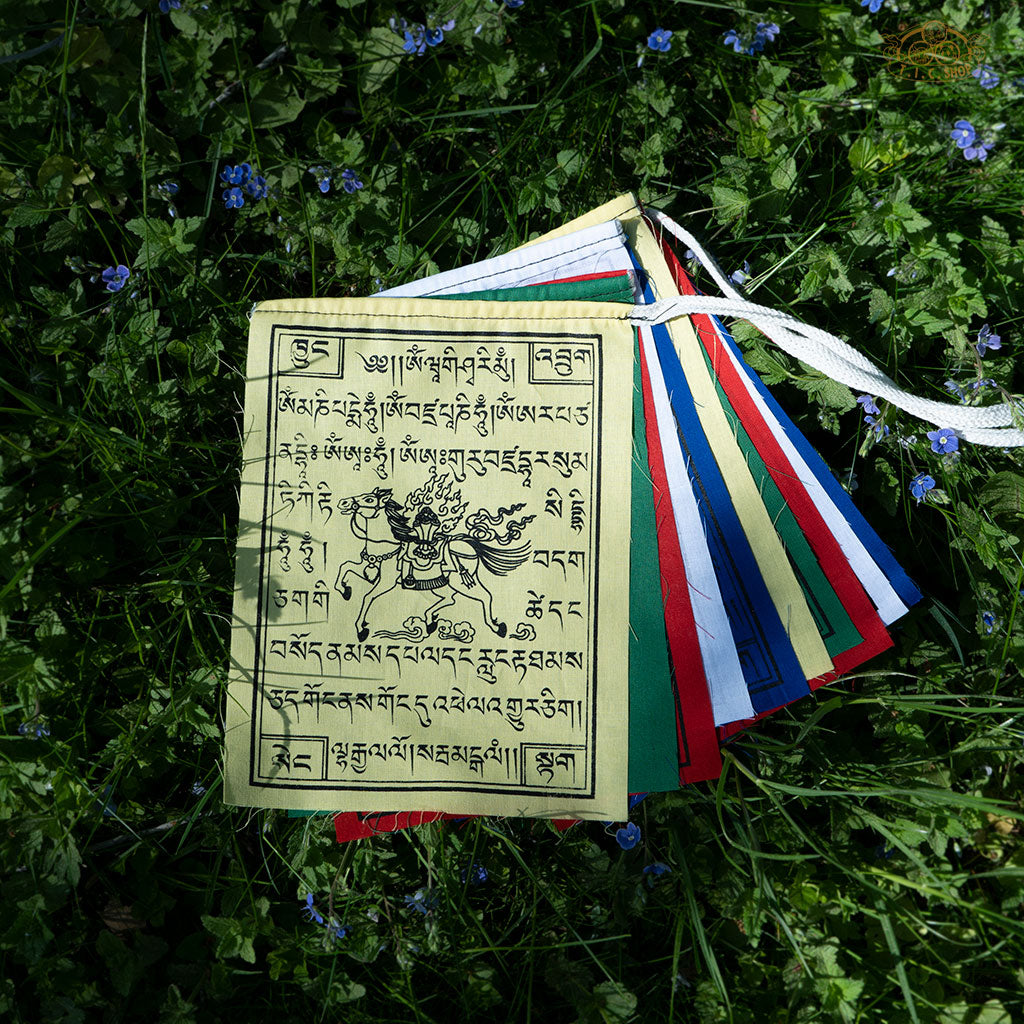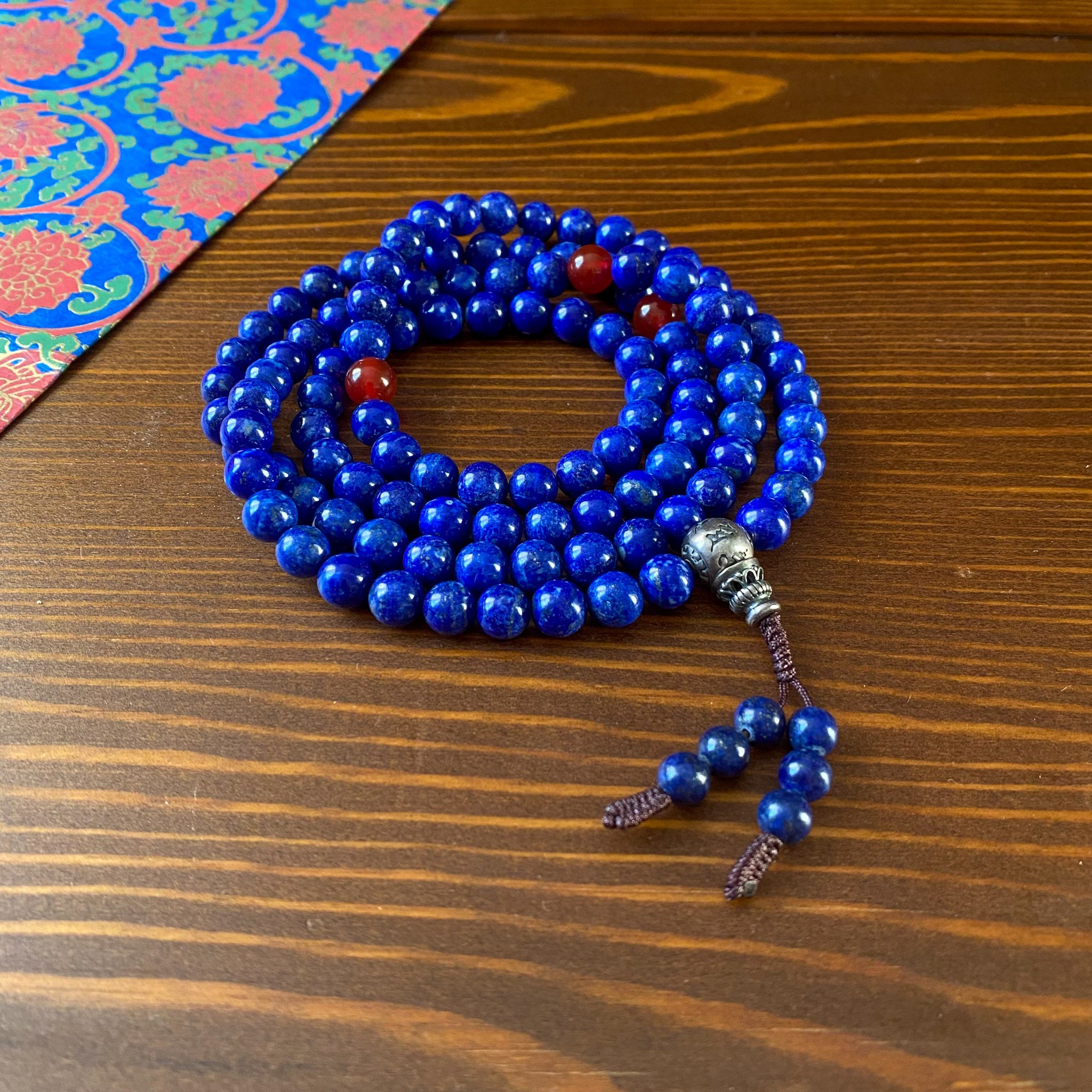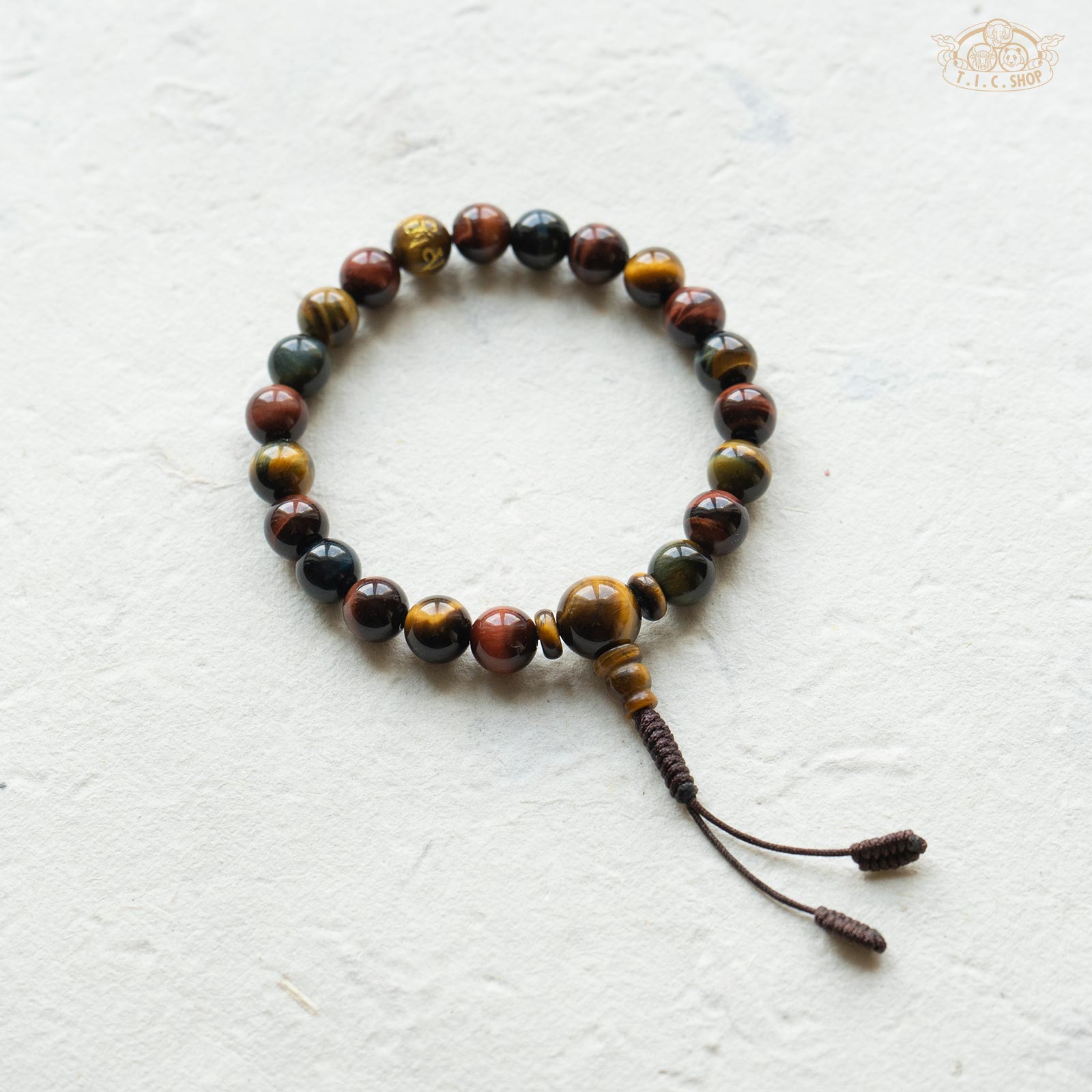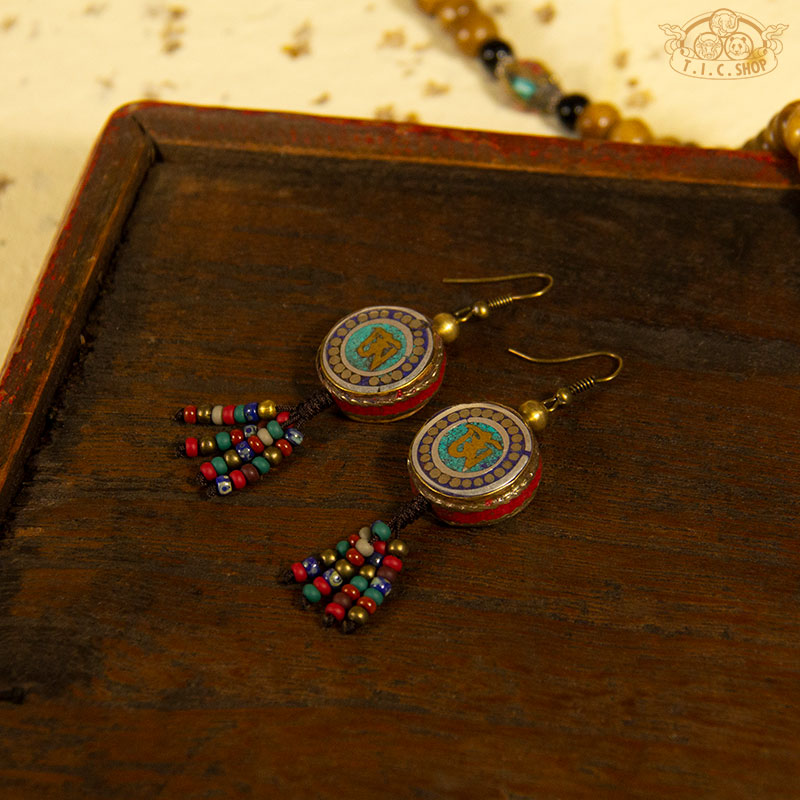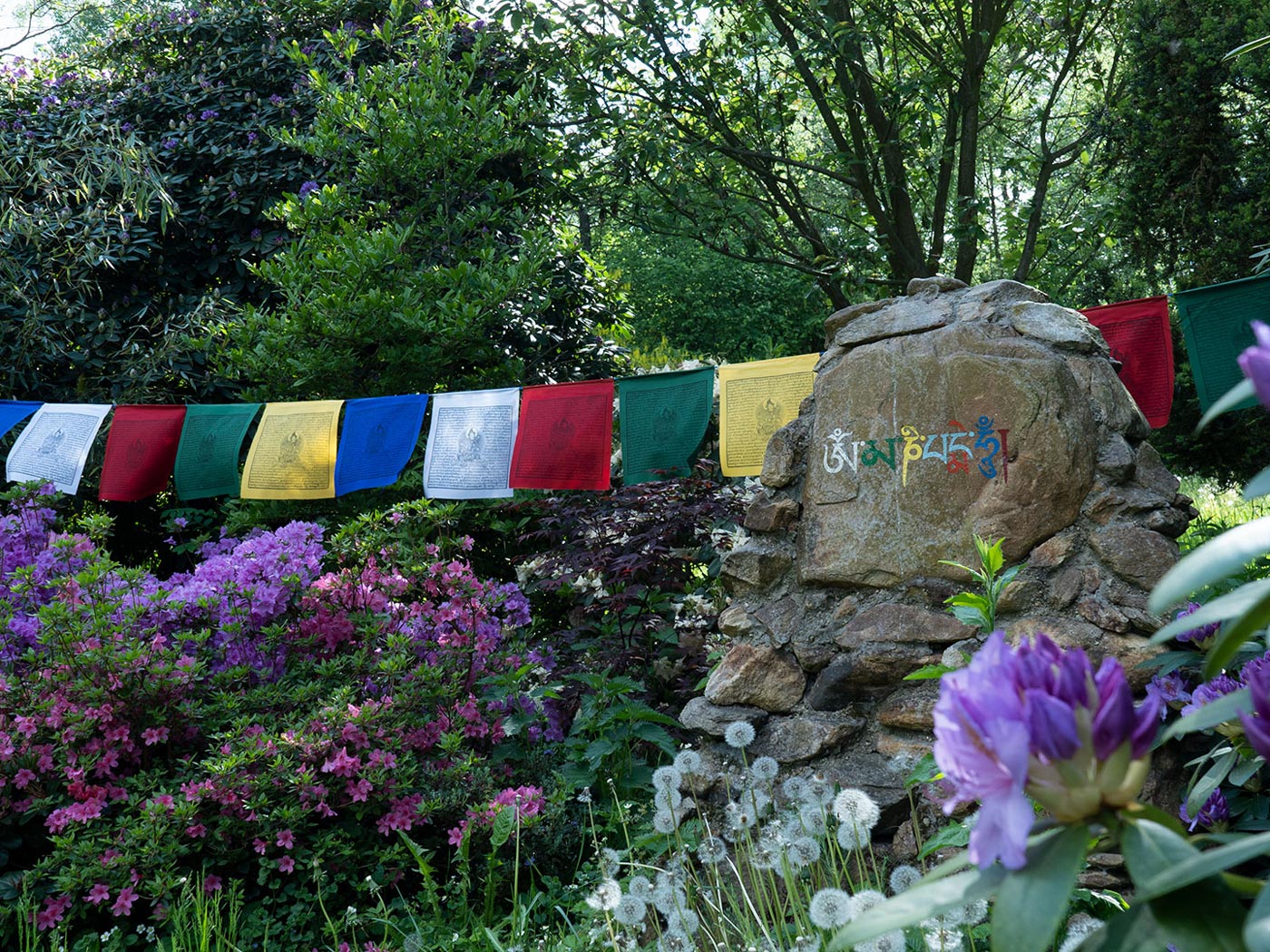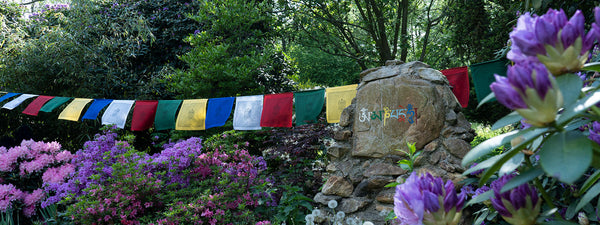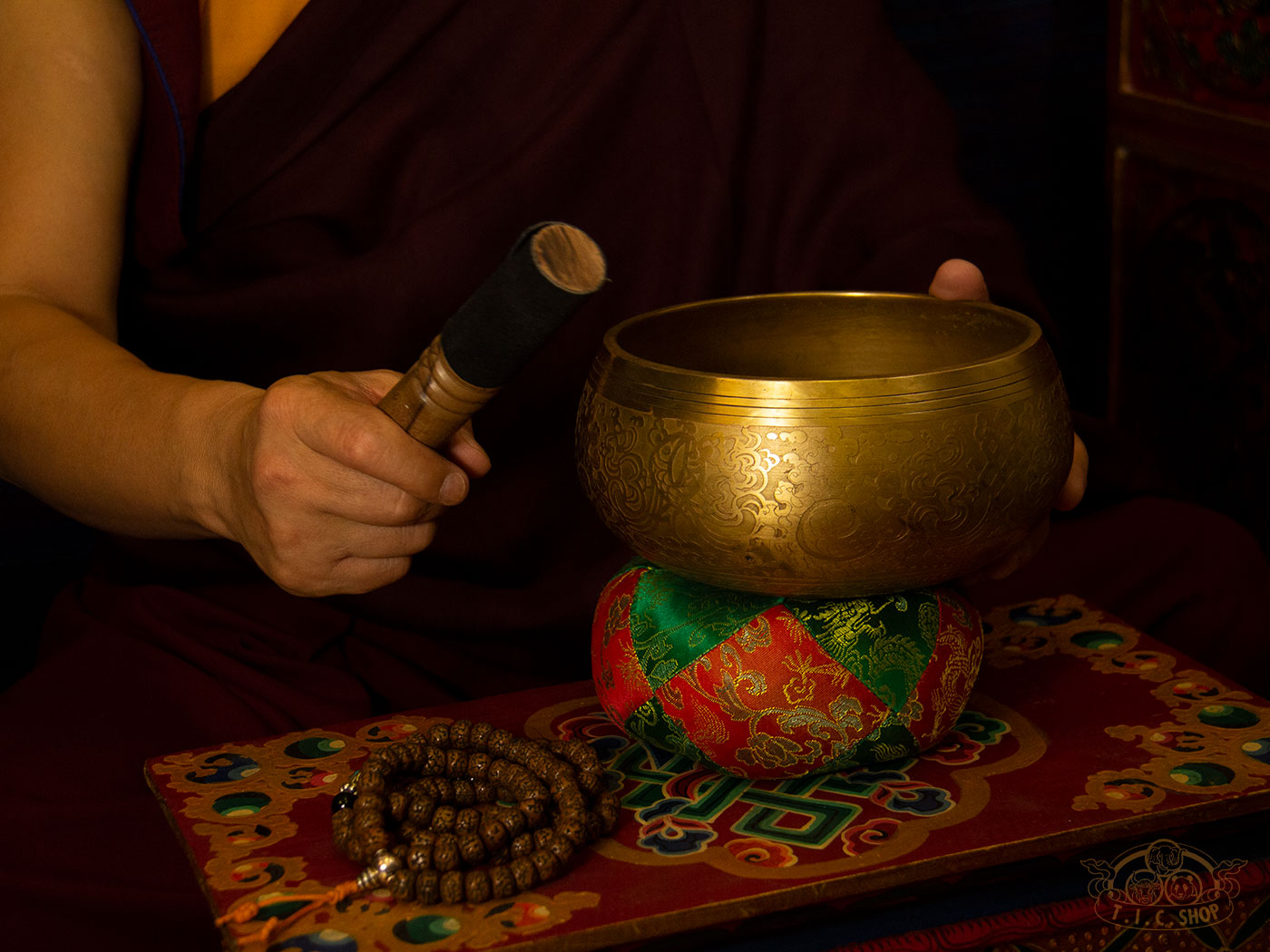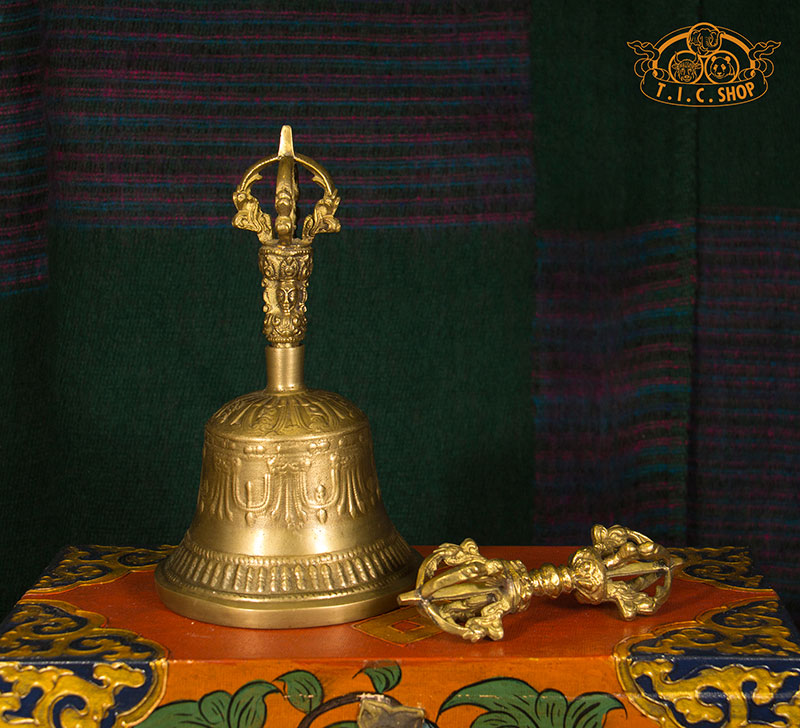In the Himalayas, amidst the grandeur of towering peaks and whispering winds, an enchanting scene unfolds before our eyes: Under the blue sky and white clouds, on the vast grassland, a blaze of colors waving in the wind. These are the Tibetan Lungtas and prayer flags—simple yet profound symbols of a timeless tradition.
-
The symbolic significance of Tibetan prayer flags
These Tibetan Lungtas and prayer flags can be seen everywhere, hanging on the snow-capped mountains, temples, roofs, and treetops. When you approach and look closely, you will find that these flags made of cotton, linen, silk and other materials are printed with sacred patterns: a horse carrying the Three jewels, Six-character mantras, Buddhist scriptures and proverbs, symbols and Buddha images—a testament to the enduring spirit of compassion and wisdom in Tibetan culture.
|
Tips: You can hang longer and bigger prayer flags outdoors, such as in the garden, on rooftops, or on the balcony, ensuring they are high enough to avoid touching the ground, and they will reverberate gorgeously as they sway with the force of the wind. Small handmade prayer flags can be hung indoors, such as on window frames, by your door or at your altar. |
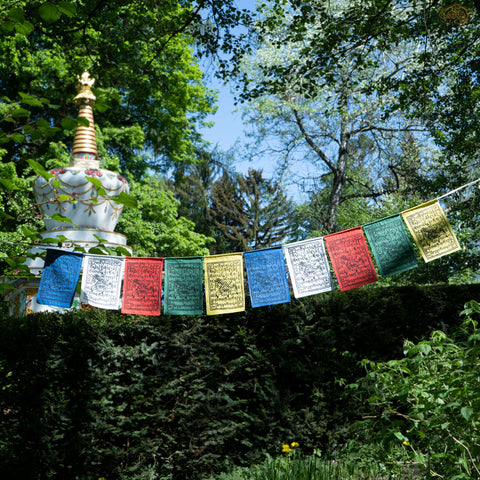
-
Legends in the wind: Tracing the Origins of Tibetan Prayer Flags
When trying to trace the origins of the now widespread custom of hanging prayer flags, the oral narrative presents many different legends. One of the most widely circulated stories tell how a Tibetan Buddhist monk brought back a set of important and sacred scriptures from India. The pages got wet as he crossed the river. Then he spread the wet paper on the ground to dry. He sat and as he meditated with his eyes closed under the tree, a gust of wind blew, and a sheet fell from the sky. Amazingly, the rest of the sheets were carried away by the wind and spread freely to bless all directions. Since then, Buddhist monks began to place their prayers and wishes on prayer flags, and gradually, Multicolored flags of prayers for peace and happiness began to flow everywhere throughout the Himalayas.
-
Art in Colors: Interpreting the Five Colors of Tibetan Prayer Flags
Embedded within the bright colors of Tibetan prayer flags lies a deeper symbolism, each color representing one of the five elemental forces that govern the universe. These colors hold profound significance in Tibetan Buddhist cosmology, providing insights into the interconnectedness of all phenomena and the eternal cycle of existence.

🟦 Blue, representing the vast sky and infinite space, embodies the wisdom of emptiness—the boundless awareness that transcends conceptual limitations.
It is often associated with Akshobhya Buddha, whose unwavering determination and equanimity inspire practitioners to cultivate inner peace and mental stability.

⬜ White, symbolizing the purity and clarity of air and wind, signifies the teachings of the Buddha—the pristine wisdom that dispels the veils of ignorance and reveals the true nature of phenomena.
In the Tibetan Buddhist tradition, white is associated with Vairocana Buddha, the embodiment of primordial wisdom and the unconditioned nature of reality.
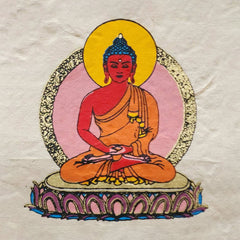
🟥 Red, emblematic of the transformative power of fire, represents the compassion of the Buddhas and bodhisattvas—the fiery energy that burns away the afflictions of sentient beings and ignites the flames of enlightenment.
Within Tibetan Buddhist iconography, red is associated with Amitabha Buddha, the Buddha of infinite light and boundless compassion, whose Pure Land offers refuge to all who seek liberation.
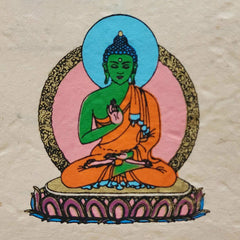
🟩 Green, symbolizing the life-giving waters of the earth, embodies the vitality of growth and renewal—the nourishing energy that sustains all living beings on their journey towards awakening.
It is often associated with Amoghasiddhi Buddha, who embodies wisdom leading to enlightenment and signifies the accomplishment of virtuous actions and the fulfillment of aspirations.

🟨 Yellow, representing the fertile soil from which all life emerges, symbolizes equanimity and impartiality—the stable foundation upon which the path to enlightenment is built.
In Tibetan Buddhist tradition, yellow is associated with Ratnasambhava Buddha, the Buddha of abundance and generosity, whose blessings shower upon all beings without discrimination.
-
Wind Horse: The Mystical Significance of Lungta
Among the various kinds of Tibetan prayer flags, the Lungta—literally translating to "wind horse"—holds a special place in Tibetan Buddhism.
Rooted in ancient Tibetan mythology and spiritual symbolism, the Lungta embodies profound meanings that resonate deeply with practitioners.
Depicted as a majestic horse galloping across the celestial realms, the Lungta represents the swift and unstoppable force of spiritual awakening. Just as the horse is known for its speed and endurance, the Lungta symbolizes the rapid transmission of blessings, prayers, and positive energy to all sentient beings.
Moreover, the imagery adorning the Lungta—such as the Four Dignities and auspicious blessing words—carries deep significance in Tibetan Buddhist iconography. The Four Dignities, represented by mythical creatures like the Garuda, Dragon, Snow Lion, and Tiger, embody the qualities of confidence, strength, fearlessness, and protection, respectively. Together, they serve as guardians and guides, leading practitioners along the path of righteousness and spiritual realization.
In Tibetan culture, the act of hanging new Lungta during auspicious occasions, such as the traditional New Year ceremony, symbolizes the renewal of spiritual aspirations and the invocation of blessings for the year ahead. As the vibrant flags flutter in the wind, they evoke a sense of joy, peace, and tranquility, infusing the atmosphere with positive energy and divine grace.
-
Guardians of the Four Corners: The Mythical Creatures of Wind Horse Flags
In the corners of Tibetan wind horse flags, ancient symbols of protection and prosperity stand sentinel—the Garuda, Dragon, Snow Lion, and Tiger—each representing a different aspect of enlightened existence. These mythical creatures embody the virtues and qualities essential for spiritual evolution and worldly success.
The Garuda, a legendary bird-like creature, symbolizes the triumph of wisdom over ignorance. Its majestic wings spread wide as it soars high in the sky, embodying freedom from worldly attachments, limitations, and suffering.
As it glides through the heavens, casting a vigilant eye gaze over all beings and offering protection from malevolent forces.
The Dragon, revered as the ruler of the sky and master of the elements, embodies the power of transformation, renewal, and the natural forces of creation.
Often depicted as serpent-like creatures with scales, claws, and the ability to fly, the dragon’s serpentine form and fiery breath symbolizes the spirit of perseverance and the ability to transcend adversity.
As the embodiment of primordial power, the dragon represents longevity, awe-inspiring wisdom, wealth and good fortune.
The Snow Lion, a mythical creature native to the Himalayan region, represents strength, auspiciousness, and positive energy.
It has a majestic appearance, its body covered in a thick coat of pristine white fur delicately outlined by a turquoise green mane and tail. Its appearance signifies purity and clarity, and also reflects spiritual aspiration and inner refinement.
The tiger, a symbol of courage, strength, and fearlessness, also embodies compassionate strength, striking a balance between assertiveness and compassion.
Tiger represents inner strength, determination, and the ability to face difficulties with bravery and perseverance.
It is the guardian of the gates of enlightenment, ensuring that all who walk the path of righteousness do so with courage and conviction.
Together, these mythical creatures form the "Four Dignities." As the flags waving in the wind, these guardians of the four corners dance within the fabric of reality, guiding practitioners along the path of spiritual awakening and inner transformation.
-
Echoes of Eternity: The Mantras of Tibetan Prayer Flags
Embedded within the fabric of Tibetan prayer flags are the incantations of the ancients—mantras of Tara Buddha, Medicine Buddha, the six-syllable mantra, and the Heart Sutra—each imbued with the power to transform consciousness and awaken the divine spark within.
These sacred mantras are passed down from generation to generation and serve as guides for spiritual growth and spiritual enlightenment.
The Mantra Om Ah Hum
This mantra can be seen as a means of helping us focus our intentions to clarify, or purify, our body, speech, and mind.
The mantra of Tara Buddha, the embodiment of compassion and wisdom, is a potent invocation for protection and guidance. Recited with heartfelt devotion, it invokes the blessings of the divine feminine, nurturing the seeds of enlightenment within the hearts of all sentient beings.
The mantra of Medicine Buddha, the healer of physical and spiritual ailments, resonates with the vibrational frequencies of divine healing energy. Chanted with faith and sincerity, it dispels the darkness of ignorance and illuminates the path to holistic well-being and inner peace.
The six-syllable mantra, also known as the "Om Mani Padme Hum," is perhaps the most widely recited mantra in Tibetan Buddhism. Each syllable represents a facet of enlightenment—compassion, wisdom, purity, and liberation—forming a sacred formula for the transformation of consciousness and the attainment of spiritual liberation.
As the wind carries these sacred syllables across the vast expanse of the Himalayas, they echo through the valleys and canyons, touching the hearts of all who encounter them. Each mantra, a divine melody resonating with the rhythms of the universe, like a bright light in the darkness, guiding us towards the liberation and eternal happiness.

